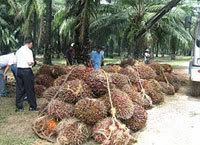G. Chandrashekhar
Mumbai, Oct. 8 A sudden surge in bio-fuel demand has transformed the agri-commodity landscape in the last couple of years. Against the backdrop of compelling factors such as continued strong demand for energy and fuel requirements, increasing oil prices and all-encompassing demand from the burgeoning economies of China and India for fuel and other commodities, bio-fuels are here to stay, according to a report prepared for the Singapore regional office of ASA International Marketing.
Several factors are seen supporting the movement towards bio-fuels including depleting oil reserves and rising oil prices, increasing demand to fuel economic growth as also environmental (green fuel) and geopolitical factors, the report argued.
Food vs fuelHaving hurt many countries, rising food prices (grains such as corn and wheat as also vegetable oils such as palm oil and soyabean oil) across the world have led to a food versus fuel global debate that needs to be addressed amicably. The heat of the debate is unlikely to diminish until second-generation bio-fuels are able to offer longer-term sustainable fuel options. Currently, bio-fuels have become the in-thing because of State support, while mass uptake can only come with the establishment of requisite infrastructure, the report noted. Major bio-fuels used at present are bio-ethanol (from corn, cane or wheat) used widely in the US and Brazil, and bio-diesel (from vegetable oil) used widely in Europe.
Noting that the ripple effect of global fuel demand has undoubtedly arrived in South East Asia, the report pointed out that the region was blessed with abundance of agricultural resources that are suitable for bio-fuel production — palm oil in Indonesia and Malaysia, sugarcane and cassava in Thailand, and coconut in The Philippines.
Region importsFeedstock availability in South-East Asia would imply that the region will become one of the world's major bio-fuels producers in the future. The geographical demand-supply imbalance indicates that currently the world's bio-fuels producing countries — European Union and North America — will need to import bio-diesel from the region in future, the report asserted. Diversion of traditional food products for fuel can potentially hurt food security, especially in poor countries. Global food and major foodstuffs imports were estimated to be a little over $400 billion in 2006, of which developing countries accounted for $142 billion and low-income food-importing countries $72 billion. Approximately two-thirds of the imports were cereals and vegetable oil. With recent sharp increase in prices of corn, wheat and palm oil, there is considerable concern of aggravating food security. To what extent farmers in developing nations would respond to higher prices with higher production remains to be seen.











 Some interesting numbers come from Thailand, where
Some interesting numbers come from Thailand, where 



